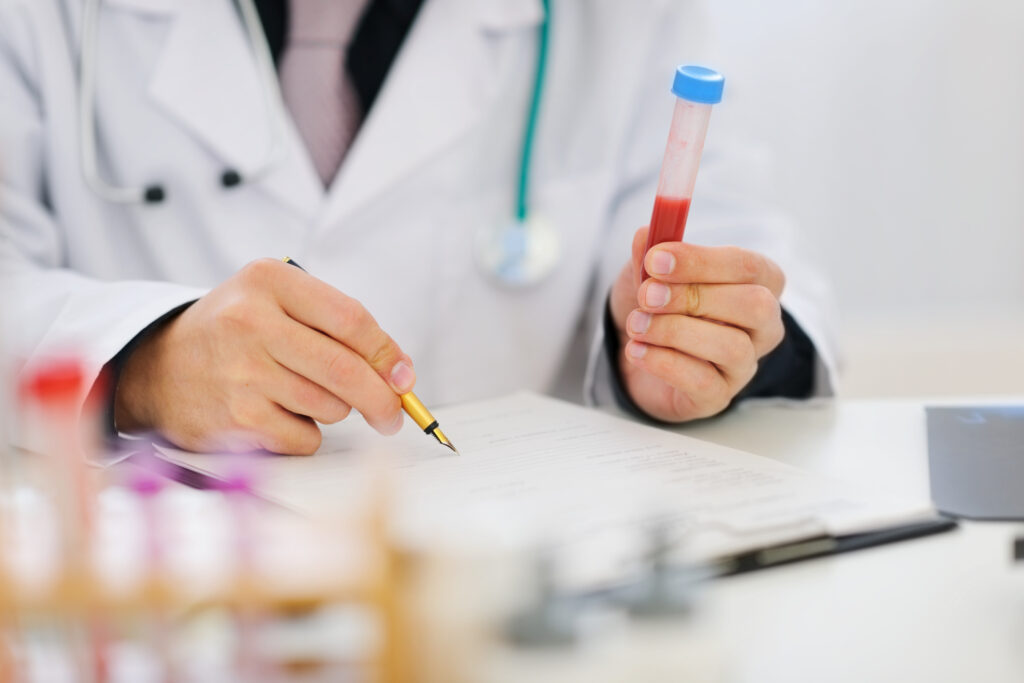<p>The Blood Cells are those circulating in our blood vessels with varied functions and immense importance for the normal functioning of the body. The Red Blood Cells or the Erythrocytes play an important role in transporting oxygen from the lungs to the tissues and carbon dioxide from the tissues to the lungs for expiration. The White Blood Cells or the Leukocytes are the defense gate to our body by protecting the body at times of an infection or harm. They drastically increase in number thereby signaling the body that something is not right. The Platelets or the Thrombocytes are indulged in the complex blood clotting mechanism. They stop the bleeding by forming clots when there is damage to the blood vessel and blood loss is imminent.</p>
<p><strong>Blood Cell Disorders</strong></p>
<p>The Blood Cells are produced in our bone marrow (within the bone) and are then released from there and circulate in the blood vessels. They circulating span of RBCs is 120 days, WBCs is 13-20 days and Platelets is 8-9 days and then they are destroyed in our spleen. Any abnormality in its formation, release, circulation, function, and destruction is considered a disorder or pathology of that cell.</p>
<p><strong>Red Blood Cells’ Disorders</strong></p>
<p><strong>Anemia: </strong>Decreased number of RBCs, decreased Hemoglobin and decreased Hematocrit (% of RBCs in blood). The most common symptoms include fatigue, inability to concentrate, shortness of breath on exertion, increased heart rate, dizziness and muscle weakness. They are divided based on the reasons.</p>
<ul>
<li><strong>Iron Deficiency Anemia</strong>: Iron is one of the important elements required for the circulation of oxygen. They ought to the accepted by the hemoglobin, the protein complex in the Red Blood Cells to carry oxygen and carbon dioxide to the cells. Deficiency of iron is one of the most common reasons for anemia.</li>
</ul>
<ul>
<li><strong>Anemia of Chronic Disease</strong>: Any long-lasting inflammatory condition, infections, alcohol and autoimmune diseases (when somebody cells try to destroy the other healthy cells).</li>
</ul>
<ul>
<li><strong>Thalassemia</strong>: a genetic condition in which the gene responsible for the normal production of the hemoglobin chain is mutated or changed and as a result of which hemoglobin is not produced enough to carry oxygen.</li>
</ul>
<ul>
<li><strong>Vitamin Deficiency Anemia</strong>: Deficiency in vitamin B12 results in Pernicious Anemia. Symptoms can progress from common to neurological left untreated<strong>. </strong>Deficiency in vitamin B9 can also result in anemia. These vitamins play an important role in the formation of red blood cells.</li>
</ul>
<ul>
<li><strong>Sickle Cell Anemia</strong>: It is an inherited disease in which the protein complex of the hemoglobin chain is altered due to the altered genes. This alters the shape of the erythrocytes and thereby decreasing its function to carry oxygen.</li>
</ul>
<p>There are a lot of other types of anemia based of the deficiency of enzymes which play a role in the formation of the cells to the structures which are required for the normal adherence of the RBCs to the blood vessel walls.</p>
<p><strong>Polycythemia Vera: </strong>This is the condition when the red blood cells are produced increasingly or look like the cells are more while the plasma is less. It is a type of cancer of the Red Blood Cells. Common symptoms include Red face, unnecessary clot formation in the blood vessels since the cells are more in number and they can be clogged and pruritis can also be seen. Clot formation gives a high risk for heart attacks and stroke.</p>
<p><strong>White Blood Cells’ Disorders</strong></p>
<p>The White Blood Cells are of five types: &#8211; Neutrophils, Basophils, Eosinophils, Lymphocytes, and Monocytes. They all work in a coordinated manner to inform the body about a threat and in eliminating the same. The WBCs are involved in protecting the body against bacterial and viral infections. An increase in these cells also knows as Leukocytosis is an alarming signal for an infection. Leukoenia or decreased production should also be considered serious. General symptoms include: malaise, fatigue, weight loss and frequent infections (when the cells are less).</p>
<ul>
<li><strong>Leukemia: </strong>is the cancer of the bone marrow cells. It includes the overproduction of red blood cells, white blood cells and platelets. Leukemia is of various types based on the cell line that is affected. It can also be Acute or Chronic based on onset.</li>
</ul>
<ul>
<li><strong>Lymphoma:</strong> It is the cancer of the lymphoid tissue outside the bone marrow. They are the lymph nodes and spleen. These are the places where the lymphocytic cells circulate to. Eventually, the content from these organs are poured into the blood resulting in Leukemia.</li>
</ul>
<p><strong>Platelets’ Disorders</strong></p>
<p>This encompasses serious conditions and serious outcomes. Platelets are required for the primary clot formation. They are actively released when a person is bleeding internally or externally. They form a temporary mesh network to stop the bleeding until the secondary clotting factors are released. Any deviation from the normal production, activation or the release of these cells results in a disorder. Some disorders are also inheritable.</p>
<p><strong>Thrombocytosis</strong> is when the body produces a large number of platelets. This could trigger clot formation in healthy blood vessels and leads to serious complications like stroke and ischemic heart episodes.</p>
<p><strong>Thrombocytopenia </strong>is when the platelets are produced less in number. When enough of them are not available during bleeding, it can result in unstopped blood loss and prove to be fatal. Symptoms include: delayed or no clot formation, blood loss, easy bruising of skin, unexplained bleeding from nose, gums etc.</p>
<p><strong>Diagnosis</strong></p>
<p>A complete blood count is the bases from which diagnosis for any blood cell disorders can be made apart from the common presenting signs and symptoms which is specific for each disorder. Further options of diagnosis and confirmations are also specific for each anomaly.</p>

Types of Blood Disorders
